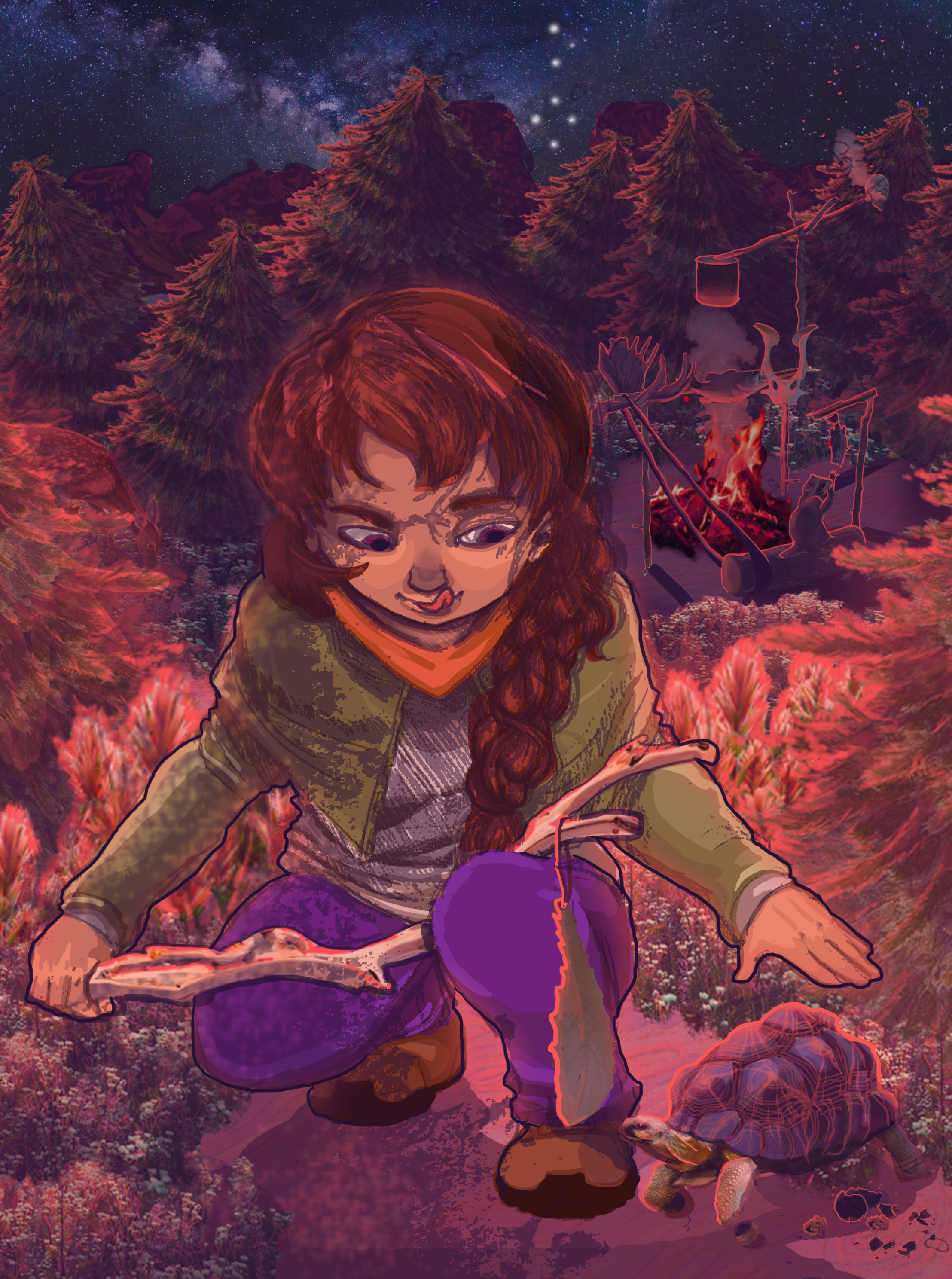Fenn's Treasure
A collaborative game design project.
Fenn’s Treasure was developed as a final project in Jesse Schell's game design course at CMU. The goal for this project was to collaborate and develop a game in teams, with the opportunity to pitch the game to industry professionals at the end of the semester. Fenn's Treasure is a a small-scale puzzle adventure game with a focus on narrative and crafting.
The game is based on the story of the of Forrest Fenn, an eccentric art collector who hid a treasure deep within the Rockies. Similar in tone to Firewatch, Don’t Starve, or Monument Valley, our game built on adventure-puzzle tropes by creating a gentle wilderness setting, focused on tone and a sense of place. Rather than pit the player in a struggle against unforgiving nature, Fenn’s Treasure uses crafting as an opportunity to unlock and explore the wilderness.
Team:
Fenn’s Treasure was developed by six experienced game developers from Carnegie Mellon University. Currently, it exists as a demo level for a full 6-hour, 2D isometric, real-time puzzle game for console and PC.
The game was created by myself (level and narrative design), Matthew Bofenkamp (writer), Breeanna Ebert (lead programmer, music, and sound), Justin Fanzo (market research), Tom Garncarz (programming, UI, UX), and Rachel Moelle (art, and programming).
Iteration:
Our process was a cycle of iteration, presentation, and play testing. We were given feedback that our original pitch lacked a strong core mechanic to carry the narrative focus.
We moved to celebrate crafting as a creative effort. We used Jason Vandenberghe’s player classification system and aligned our players as skilled, impulse players who prefer solo play at a serene level. We also identified that our core target audience would be players who enjoy learning about a world. As such, we focused on delving deeper and expanding on the Yellowstone setting. We drew our level design on specific references by Forrest Fenn himself, as well as research into the setting and locations within Yellowstone.
Takeaways:
Our final product was a genre-merging game with the potential for greater expansion. We received constructive criticism on the risks of merging different game genres, and trying to appeal to too wide an audience. As such, in future iterations we concluded we would delve further into our wayfinding mechanic, which would place more long-term, large-scale decision making into the hands of the player.
Ultimately, our demo was a proof-of-concept for a game in which foregrounds a calm, serene environment based on American folklore. It invites players to explore and contemplate, offering an experience that is both grounded and mystical.






